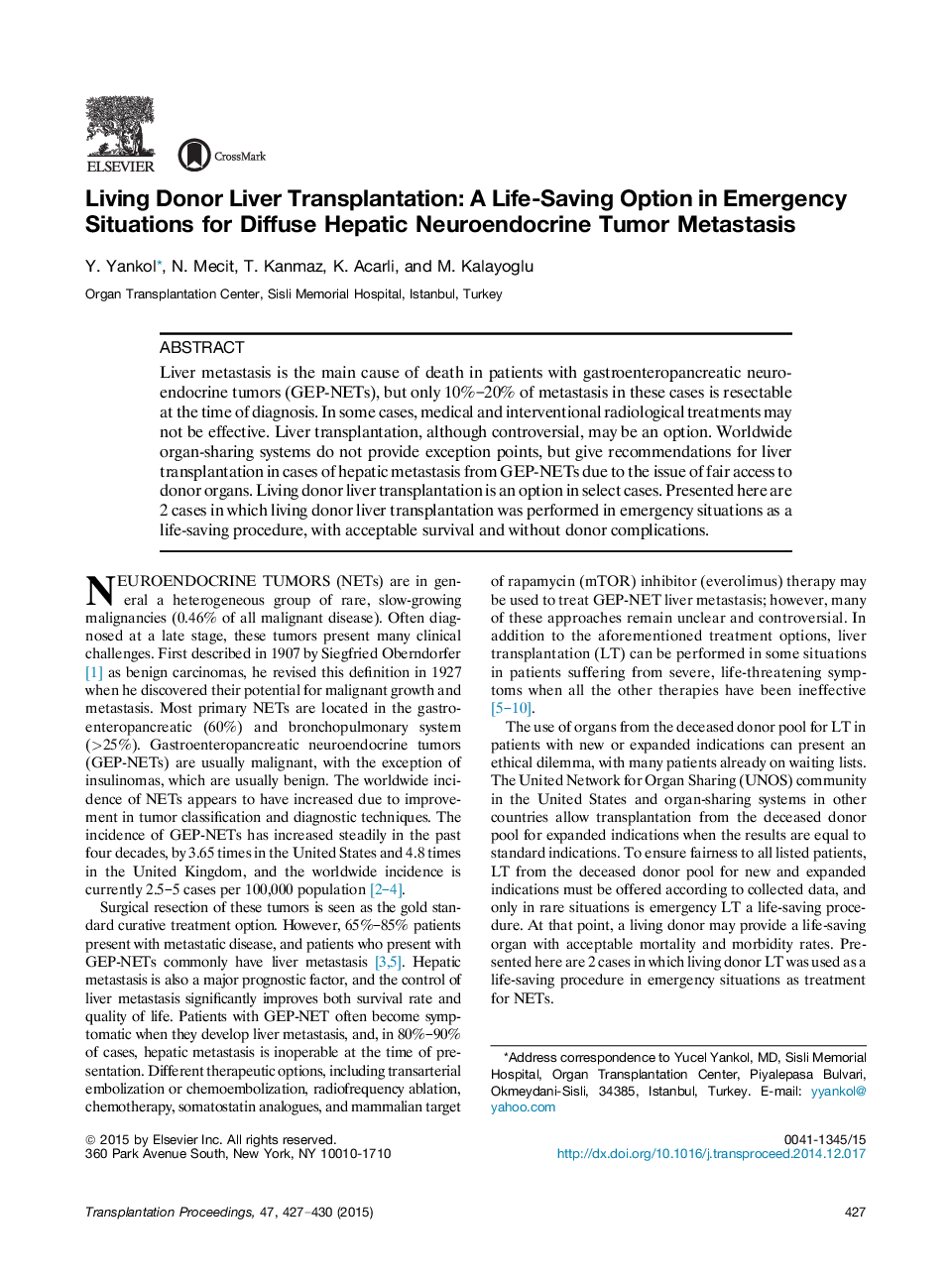| Article ID | Journal | Published Year | Pages | File Type |
|---|---|---|---|---|
| 4257621 | Transplantation Proceedings | 2015 | 4 Pages |
•Liver metastasis is the main cause of death in patients with gastroenteropancreatic neuroendocrine tumors (GEP-NETs).•Liver transplantation (LT) can be performed in life-threatening situations.•The use of a deceased donor liver can present an ethical dilemma.•Living donor liver transplantation (LDLT) can be a life-saving alternative, especially in emergency situations.
Liver metastasis is the main cause of death in patients with gastroenteropancreatic neuroendocrine tumors (GEP-NETs), but only 10%–20% of metastasis in these cases is resectable at the time of diagnosis. In some cases, medical and interventional radiological treatments may not be effective. Liver transplantation, although controversial, may be an option. Worldwide organ-sharing systems do not provide exception points, but give recommendations for liver transplantation in cases of hepatic metastasis from GEP-NETs due to the issue of fair access to donor organs. Living donor liver transplantation is an option in select cases. Presented here are 2 cases in which living donor liver transplantation was performed in emergency situations as a life-saving procedure, with acceptable survival and without donor complications.
